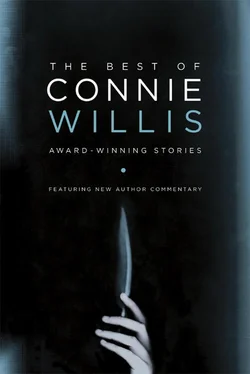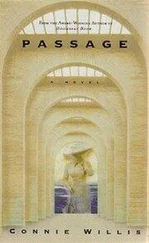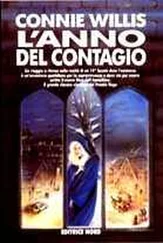It’s that undefined something we’re really afraid of—the flicker of movement we don’t quite catch out of the corner of our eye, the bad dream we can’t quite remember when we wake up, the sound of a door opening downstairs we thought we heard. And worst of all, the things we’re not sure even happened, the things that we might just have imagined, that might mean we’re going mad, all those nameless, nebulous things we can’t quite put our finger on and can only guess at.
That’s why death is the scariest thing of all. Nobody living has ever caught sight of it, and in spite of centuries’ worth of claims of hauntings and messages from beyond the grave, nobody has ever come back to tell us what it was like. And we not only can’t imagine what it’s like, we can’t even imagine how to imagine it.
But we keep trying. So we tell ghost stories about somebody coming to get your liver, and go to slasher movies, and read zombie novels, though none of them are really scary. What’s really scary is looking up at the clock on the wall of the railway station and seeing that it has no hands.
Or realizing that you’ve seen the people in the ship’s lounge before—right before they were killed by a bomb.
THE SOUL SELECTS HER OWN SOCIETY:
INVASION AND REPULSION:
A CHRONOLOGICAL REINTERPRETATION OF TWO OF EMILY DICKINSON’S POEMS:
A WELLSIAN PERSPECTIVE

Until recently it was thought that Emily Dickinson’s poetic output ended in 1886, the year she died. Poems 186B and 272?, however, suggest that not only did she write poems at a later date, but she was involved in the “great and terrible events” 1 of 1897.
The poems in question originally came to light in 1991 2 , while Nathan Fleece was working on his doctorate. Fleece, who found the poems 3 under a hedge in the Dickinsons’ backyard, classified the poems as belonging to Dickinson’s Early or Only Slightly Eccentric Period, but a recent examination of the works 4 has yielded up an entirely different interpretation of the circumstances under which the poems were written.
The sheets of paper on which the poems were written are charred around the edges, and that of Number 272? has a large round hole burnt in it. Martha Hodge-Banks claims that said charring and hole were caused by “a pathetic attempt to age the paper and forgetting to watch the oven,” 5 but the large number of dashes makes it clear they were written by Dickinson, as well as the fact that the poems are almost totally indecipherable. Dickinson’s unreadable handwriting has been authenticated by any number of scholars, including Elmo Spencer in Emily Dickinson: Handwriting or Hieroglyphics? and M. P. Cursive, who wrote, “Her a ’s look like c ’s, her e ’s look like 2 ’s, and the whole thing looks like chicken scratches.” 6
The charring seemed to indicate that the poems had been written either while smoking 7 or in the midst of some catastrophe, and I began examining the text for clues. Fleece had deciphered Number 272? as beginning, “I never saw a friend— / I never saw a moom—,” which made no sense at all, 8 and on closer examination I saw that the stanza actually read:
I never saw a fiend—
I never saw a bomb—
And yet of both of them I dreamed—
While in the—dreamless tomb—
a much more authentic translation, particularly in regard to the rhyme scheme. “Moom” and “tomb” actually rhyme, which is something Dickinson hardly ever did, preferring near-rhymes such as “mat/gate,” “tune/sun,” and “balm/hermaphrodite.”
The second stanza was more difficult, as it occupied the area of the round hole, and the only readable portion was a group of four letters farther down that read “ulla.” 9 This was assumed by Fleece to be part of a longer word such as “bullary” (a convocation of popes), 10 or possibly “dullard” or “hullabaloo.” 11
I, however, immediately recognized “ulla” as the word H. G. Wells had reported hearing the dying Martians utter, a sound he described as “a sobbing alternation of two notes 12 … a desolating cry.”
“Ulla” was a clear reference to the 1897 invasion by the Martians, previously thought to have been confined to England, Missouri, and the University of Paris. 13 The poem fragment, along with 186B, clearly indicated that the Martians had landed in Amherst and that they had met Emily Dickinson.
At first glance, this seems an improbable scenario due to both the Martians’ and Emily Dickinson’s dispositions. Dickinson was a recluse who didn’t meet anybody, preferring to hide upstairs when neighbors came to call and to float notes down on them. 14 Various theories have been advanced for her self-imposed hermitude, including Bright’s Disease, an unhappy love affair, eye trouble, and bad skin. T. L. Mensa suggests the simpler theory that all the rest of the Amherstonians were morons. 15
None of these explanations would have made it likely that she would like Martians any better than Amherstates, and there is the added difficulty that, having died in 1886, she would also have been badly decomposed.
The Martians present additional difficulties. The opposite of recluses, they were in the habit of arriving noisily, attracting reporters, and blasting at everybody in the vicinity. There is no record of their having landed in Amherst, though several inhabitants mention unusually loud thunderstorms in their diaries, 16 and Louisa May Alcott, in nearby Concord, wrote in her journal, “Wakened suddenly last night by a loud noise to the west. Couldn’t get back to sleep for worrying. Should have had Jo marry Laurie. To Do: Write sequel in which Amy dies. Serve her right for burning manuscript.”
There is also indirect evidence for the landing. Amherst, frequently confused with Lakehurst, was obviously the inspiration for Orson Welles’s setting the radio version of “War of the Worlds” in New Jersey. 17 In addition, a number of the tombstones in West Cemetery are tilted at an angle, and, in some cases, have been knocked down, making it clear that the Martians landed not only in Amherst, but in West Cemetery, very near Dickinson’s grave.
Wells describes the impact of the shell 18 as producing “a blinding glare of vivid green light” followed by “such a concussion as I have never heard before or since.” He reports that the surrounding dirt “splashed,” creating a deep pit and exposing drainpipes and house foundations. Such an impact in West Cemetery would have uprooted the surrounding coffins and broken them open, and the resultant light and noise clearly would have been enough to “wake the dead,” including the slumbering Dickinson.
That she was thus awakened, and that she considered the event an invasion of her privacy, is made clear in the longer poem, Number 186B, of which the first stanza reads:
I scarce was settled in the grave—
When came—unwelcome guests—
Who pounded on my coffin lid—
Intruders—in the dust— 19
Why the “unwelcome guests” did not hurt her, 20 in light of their usual behavior, and how she was able to vanquish them are less apparent, and we must turn to H. G. Wells’s account of the Martians for answers.
On landing, Wells tells us, the Martians were completely helpless due to Earth’s greater gravity, and remained so until they were able to build their fighting machines. During this period they would have posed no threat to Dickinson except that of company. 21
Secondly, they were basically big heads. Wells describes them as having eyes, a beak, some tentacles, and “a single large tympanic drum” at the back of the head which functioned as an ear. Wells theorized that the Martians were “descended from beings not unlike ourselves, by a gradual development of brain and hands… at the expense of the body.” He concluded that, without the body’s vulnerability and senses, the brain would become “selfish and cruel” and take up mathematics, 22 but Dickinson’s effect on them suggests that the overenhanced development of their neocortexes had turned them instead into poets.
Читать дальше













